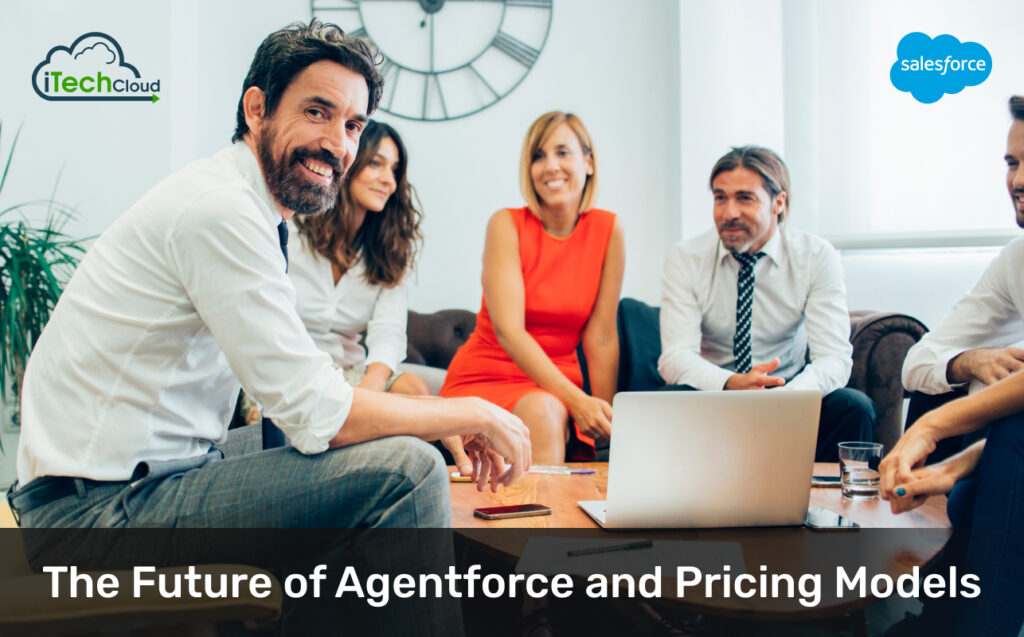The Future of Agentforce and Pricing Models

Introduction
The landscape of workforce management is undergoing a radical transformation, driven by advancements in artificial intelligence (AI), automation, and evolving business models. One of the most significant developments in this space is the rise of Agentforce a dynamic, AI-driven workforce model that blends human expertise with intelligent automation.
At the same time, traditional pricing models are being redefined to accommodate flexible, scalable, and performance-based structures. Companies are shifting from fixed salaries and hourly wages to outcome-based pricing, subscription models, and dynamic pay structures that align with business goals and employee satisfaction.
Table of Contents
1. What is Agentforce?
Agentforce refers to a hybrid workforce model where human agents collaborate with AI-driven tools to enhance productivity, customer service, and operational efficiency. Unlike traditional workforce setups, Agentforce leverages:
- AI Assistants & Chatbots – Handling routine queries, data processing, and initial customer interactions.
- Human-AI Collaboration – Agents work alongside AI to make faster, data-driven decisions.
- Remote & Gig Workforce – Flexible, on-demand agents who can be scaled up or down based on demand.
- Automated Workflows – AI handles repetitive tasks, freeing human agents for complex problem-solving.
This model is particularly dominant in customer support, sales, healthcare, and IT services, where efficiency and scalability are crucial.
2. Key Trends Shaping the Future of Agentforce
A. AI and Automation Integration
AI is no longer just a support tool it’s becoming a core part of the workforce. Key developments include:
- Conversational AI (e.g., ChatGPT, Google Bard) handling customer interactions.
- Predictive analytics guiding agents with real-time insights.
- Robotic Process Automation (RPA) managing backend tasks like data entry.
B. Rise of the Hybrid Workforce
Companies are moving towards a blended model where.
- Full-time employees handle strategic roles.
- Freelancers and gig workers provide flexible support.
- AI bots manage repetitive tasks.
C. Hyper-Personalization in Customer Service
Agentforce enables personalized customer experiences by combining AI’s data-processing speed with human empathy.
D. Remote & On-Demand Workforce Growth
The shift to remote work has accelerated the adoption of cloud-based agent platforms, allowing businesses to hire globally.
E. Upskilling & Continuous Learning
As AI takes over routine tasks, human agents must develop higher-value skills like emotional intelligence, complex problem-solving, and AI management.
3. Emerging Pricing Models for Agentforce
Traditional pricing models (hourly wages, fixed salaries) are becoming obsolete in the Agentforce era. New models include:
A. Outcome-Based Pricing
- Pay-for-performance: Agents are compensated based on results (e.g., resolved tickets, sales conversions).
- SLA-based pricing: Payment tied to service-level agreements (e.g., response time, customer satisfaction scores).
Pros:
✔ Aligns incentives with business goals.
✔ Encourages efficiency.
Cons:
❌ Hard to measure in some roles.
❌ May lead to burnout if not balanced.
B. Subscription-Based Models
- Flat monthly fee for access to a pool of agents + AI tools.
- Common in B2B SaaS (e.g., Zendesk, Salesforce).
Pros:
✔ Predictable costs.
✔ Scalable for growing businesses.
Cons:
❌ May not fit variable demand.
C. Dynamic Pricing (Surge Pricing for Workforce)
- Pay fluctuates based on demand (e.g., higher rates during peak hours).
- Used in gig platforms like Uber, but now applied to customer service agents.
Pros:
✔ Optimizes workforce utilization.
✔ Attracts talent during high-demand periods.
Cons:
❌ Can lead to cost unpredictability.
D. Hybrid Models (AI + Human Pricing)
- AI usage is billed per query, while humans handle premium tasks.
- Example: A chatbot handles 80% of queries; humans step in for complex issues at a higher rate.
Pros:
✔ Cost-efficient.
✔ Balances automation & human touch.
Cons:
❌ Requires seamless integration.
4. Challenges and Opportunities
Challenges:
- Job Displacement Fears – Workers worry about AI replacing roles.
- Data Privacy & Security – AI-driven agents handle sensitive info.
- Fair Compensation – Gig workers may face inconsistent pay.
- Integration Complexity – Merging AI with human workflows isn’t always smooth.
Opportunities:
- Higher Efficiency – AI reduces operational costs.
- Global Talent Access – Remote Agentforce enables hiring from anywhere.
- Better Customer Experiences – Faster, personalized service.
- New Revenue Streams – Companies can monetize AI-agent platforms.
5. The Road Ahead: How Businesses Can Adapt
A. Invest in AI-Augmented Training
- Upskill employees to work alongside AI, not against it.
B. Adopt Flexible Pricing Models
- Test outcome-based or subscription models to see what fits.
C. Prioritize Ethical AI & Fair Pay
- Ensure transparency in AI decisions and fair wages for gig workers.
D. Leverage Data for Continuous Improvement
- Use analytics to refine Agentforce efficiency and pricing.
E. Build a Scalable Hybrid Workforce
- Combine full-time, freelance, and AI agents for optimal flexibility.
My Takeaway: Agentforce and Pricing Models
The future of Agentforce is a blend of human expertise and AI-driven efficiency, supported by innovative pricing models that reward performance and scalability. Businesses that embrace this shift will gain a competitive edge through lower costs, faster operations, and superior customer experiences.
However, success depends on ethical AI use, fair workforce policies, and adaptable pricing strategies. The companies that strike the right balance between automation and human touch will lead the next wave of workforce innovation.

